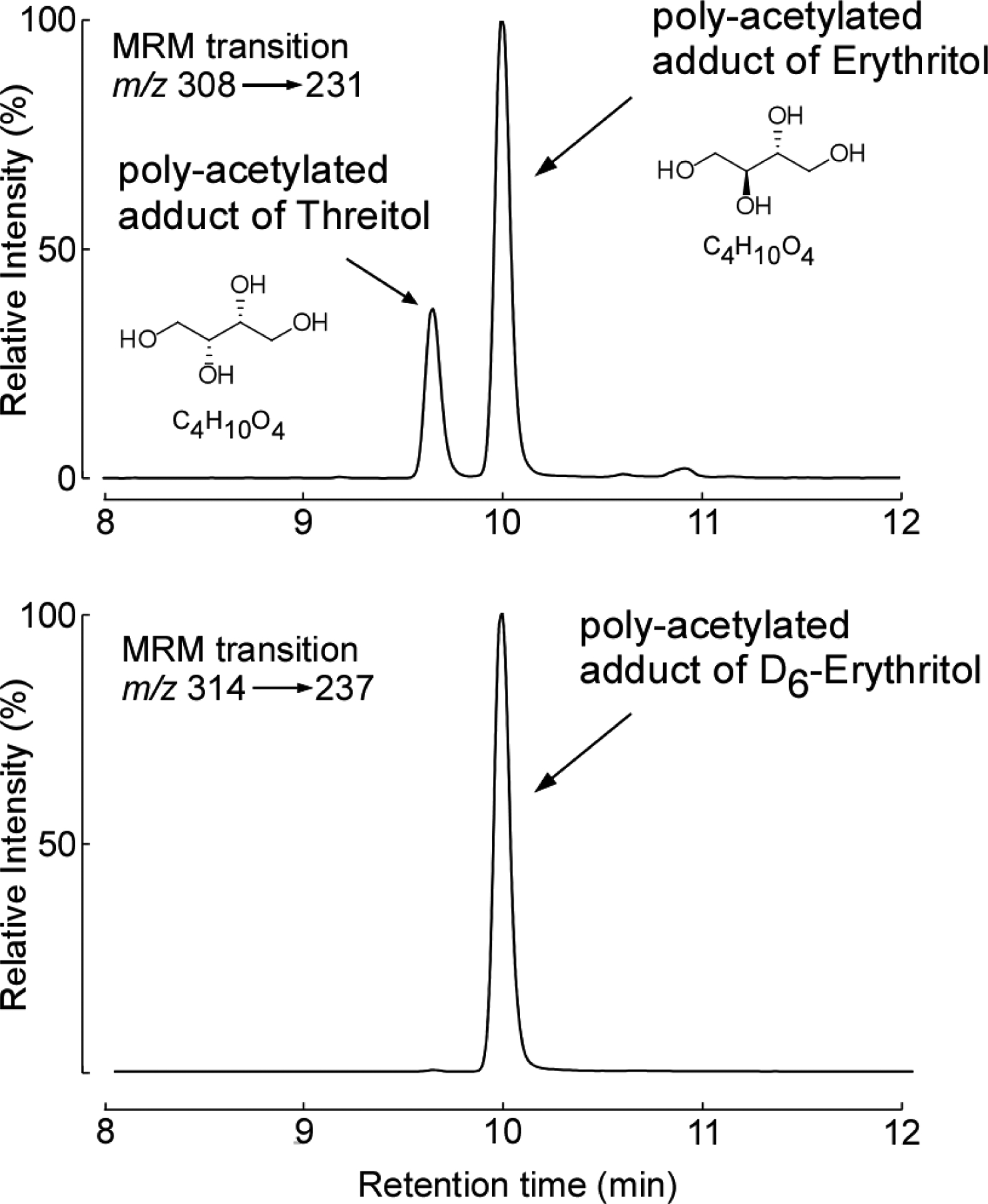Extended Display Figure 2: Chromatographic separation of erythritol from its structural isomer threitol.

After exhaustive acetylation with acetic acid anhydride, the polyols erythritol and its structural isomer, threitol, were baseline resolved by the HPLC method developed. Shown are the chromatograms generated by multiple reaction monitoring transitions (MRM) for the derivatized plasma analytes (m/z 308; [M+NH4]+) and synthetic isotopically labeled erythritol internal standard (D6-Erythritol; m/z 314; [M+NH4]+). With the column matrix and mobile phase /gradient employed, coupled with the characteristic parent [M+NH4+] —> daughter ion transition used (for both erythritol and threitol), baseline chromatographic resolution of the two structural isomers was achieved.
